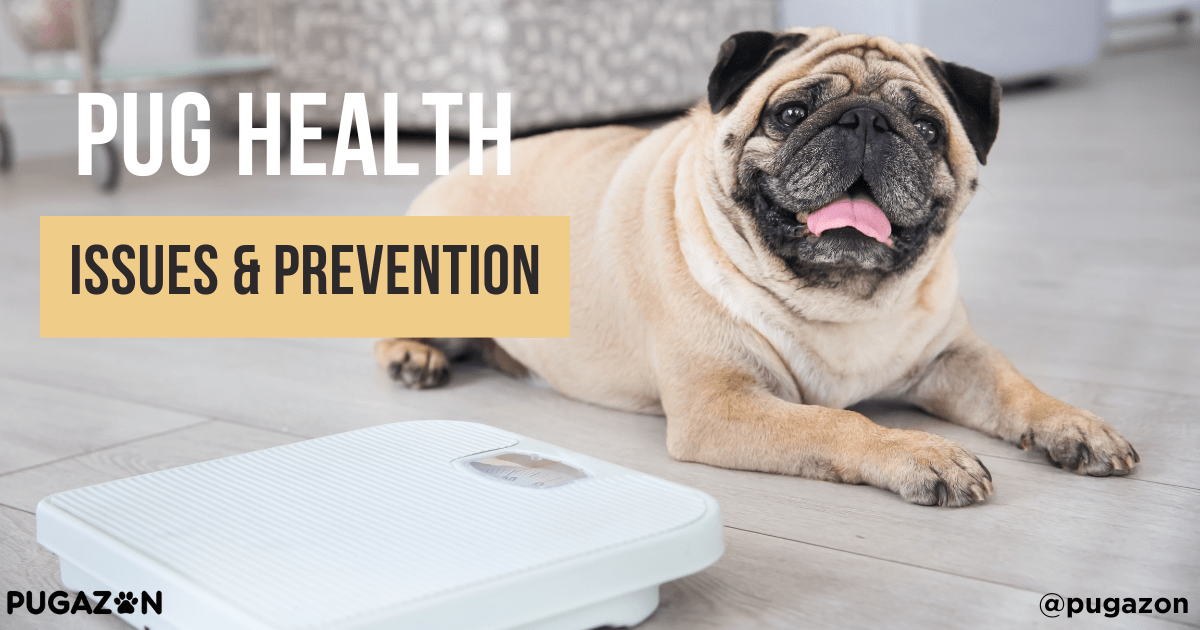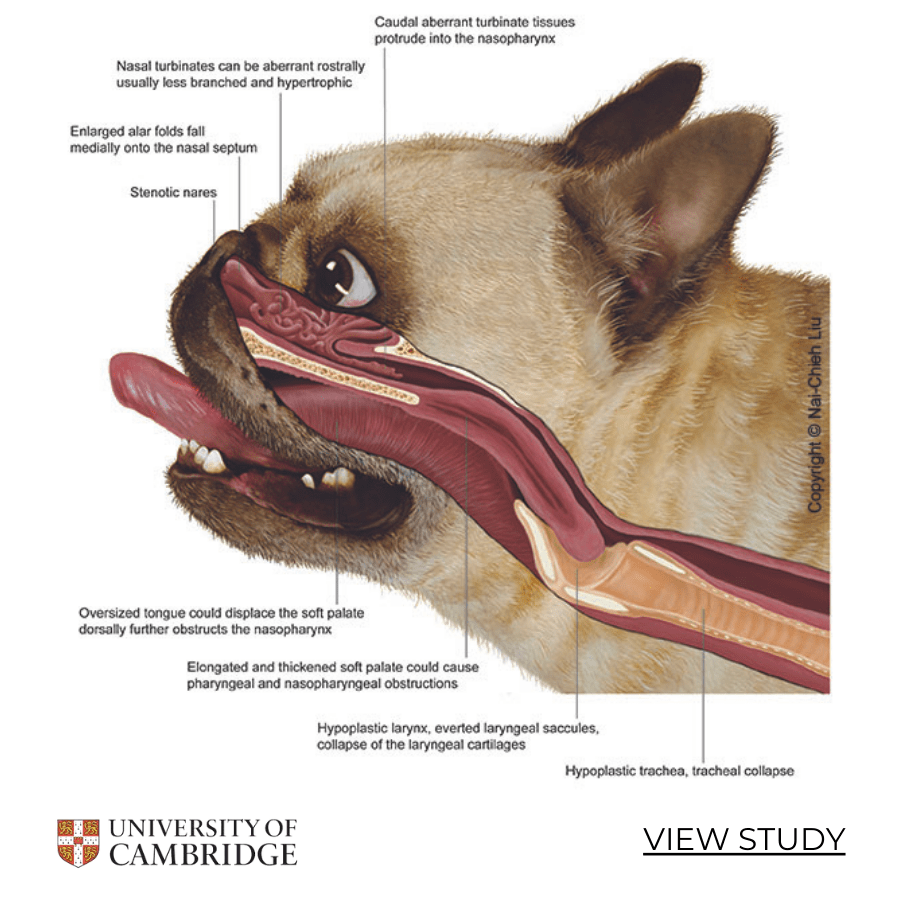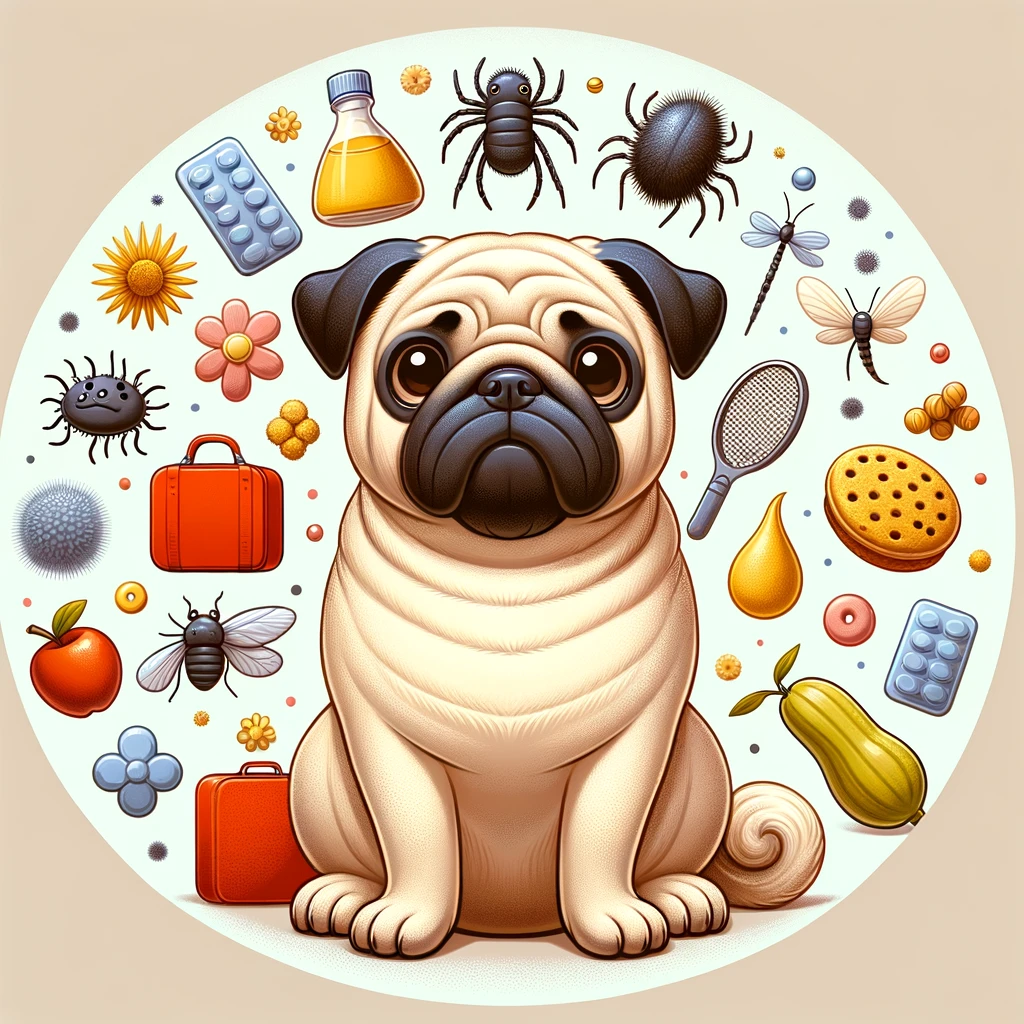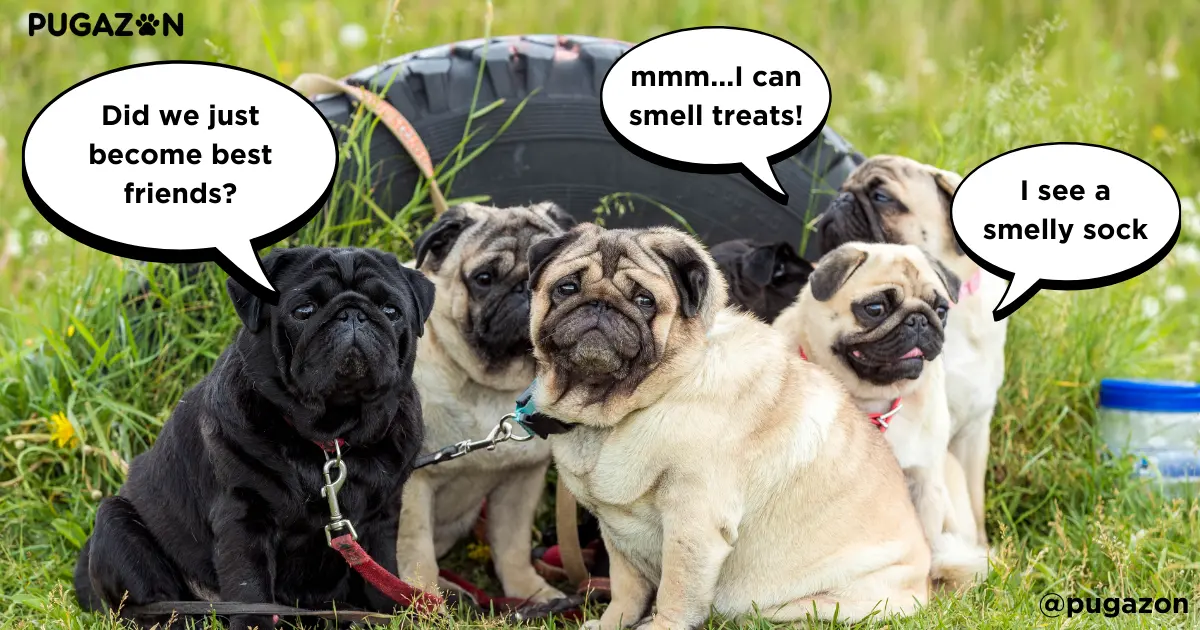Why Proactive Care is Vital for Pug Health
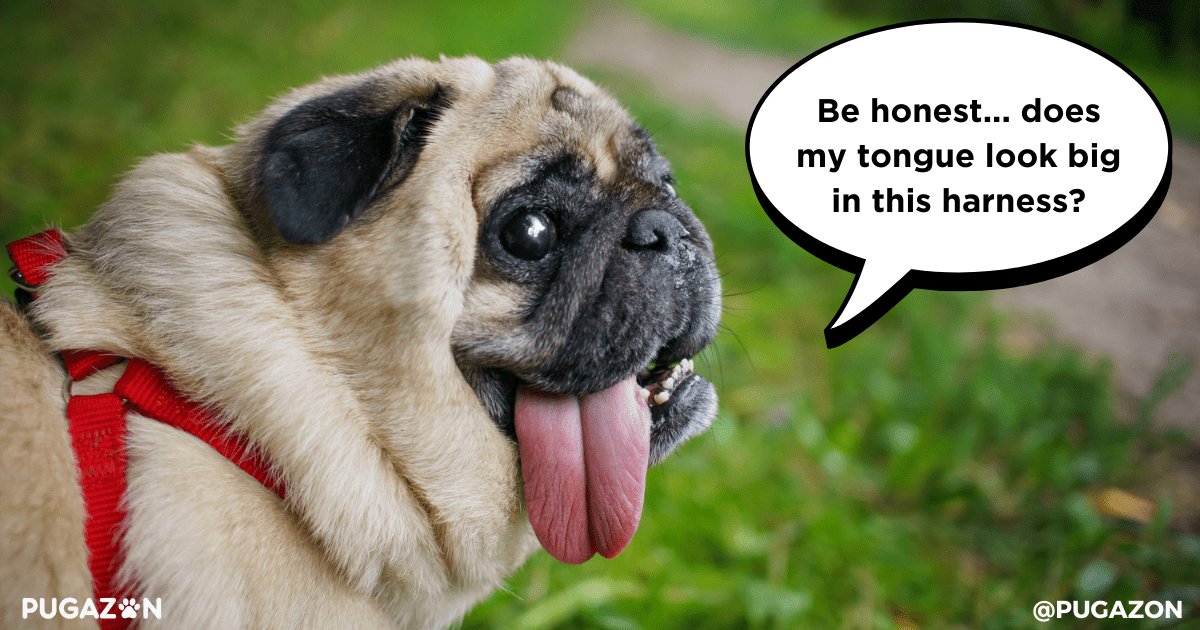
Pugs are beloved for their unique physical traits and playful personalities, but their distinctive features also make them more prone to certain health issues. Proactive pug health care is essential to ensure that your pug leads a happy, healthy life. Regular vet visits, a proper diet, and preventative care can go a long way in managing common pug health problems.
Due to their flat faces, pugs are more susceptible to respiratory problems, which can become serious if not managed properly. Their prominent eyes are prone to injury, and their wrinkled skin folds can trap moisture, leading to infections. Obesity, joint problems, and dental issues are also common among pugs, making it vital for owners to be aware of these risks and take steps to prevent them.
Preventative care not only helps your pug avoid these health challenges but also reduces vet bills and improves your pug’s quality of life. By focusing on a balanced diet, exercise, grooming, and regular checkups, you can significantly lower the likelihood of your pug developing serious health conditions. This guide will explore the most common health issues in pugs and offer practical tips for preventing and managing them effectively.
Pug Health Care: Managing Respiratory Problems
Pugs’ flat faces, or brachycephalic structure, make them prone to a range of respiratory issues. One of the most serious conditions affecting pugs is Brachycephalic Obstructive Airway Syndrome (BOAS), which can cause difficulty breathing, snorting, and even collapse in extreme cases. Here’s how to recognize and manage respiratory problems in your pug.
Recognizing Signs of Respiratory Distress in Pugs
Common signs of respiratory distress in pugs include:
- Heavy Breathing or Snorting: These can be normal to some degree, but if your pug consistently struggles to breathe or makes loud snorting sounds, it may indicate a problem.
- Excessive Panting: Pugs tend to pant heavily, especially in hot weather or after exercise. However, excessive panting in mild conditions is a red flag.
- Blue or Pale Gums: This indicates that your pug is not getting enough oxygen, which is a medical emergency.
Preventing Respiratory Issues in Pug Health Care
To help prevent or minimize respiratory problems in your pug:
- Weight Management: Overweight pugs are more likely to suffer from breathing problems. Keeping your pug at a healthy weight reduces pressure on their respiratory system.
- Exercise Moderation: Avoid vigorous exercise, especially in hot weather. Opt for short, slow-paced walks during cooler parts of the day, and always have water available.
- Avoid Overheating: Heat exacerbates breathing problems in pugs, so keep your home cool and well-ventilated. In summer, limit outdoor activities and consider using a cooling vest for your pug.
Treatment Options for Respiratory Problems in Pugs
For pugs with severe BOAS, surgery may be necessary to improve their breathing. This involves widening the nostrils or removing excess tissue from the throat to create a clearer airway. If your pug has frequent breathing difficulties, consult your vet to determine if surgery is a viable option.
Managing Day-to-Day Breathing
In addition to the preventative measures mentioned, managing your pug’s environment is crucial for their respiratory health:
- Humidifiers: Use a humidifier at home to keep the air moist, which helps with breathing.
- Minimize Dust: Ensure your home is clean and free of dust, as it can irritate your pug’s sensitive airway.
Reflections on Respiratory Health
Being aware of respiratory issues in pugs is the first step toward prevention and management. By maintaining a healthy weight, avoiding extreme temperatures, and seeking early treatment, you can significantly reduce the risk of respiratory distress in your pug.
Pug Health Care: Addressing Obesity and Joint Issues
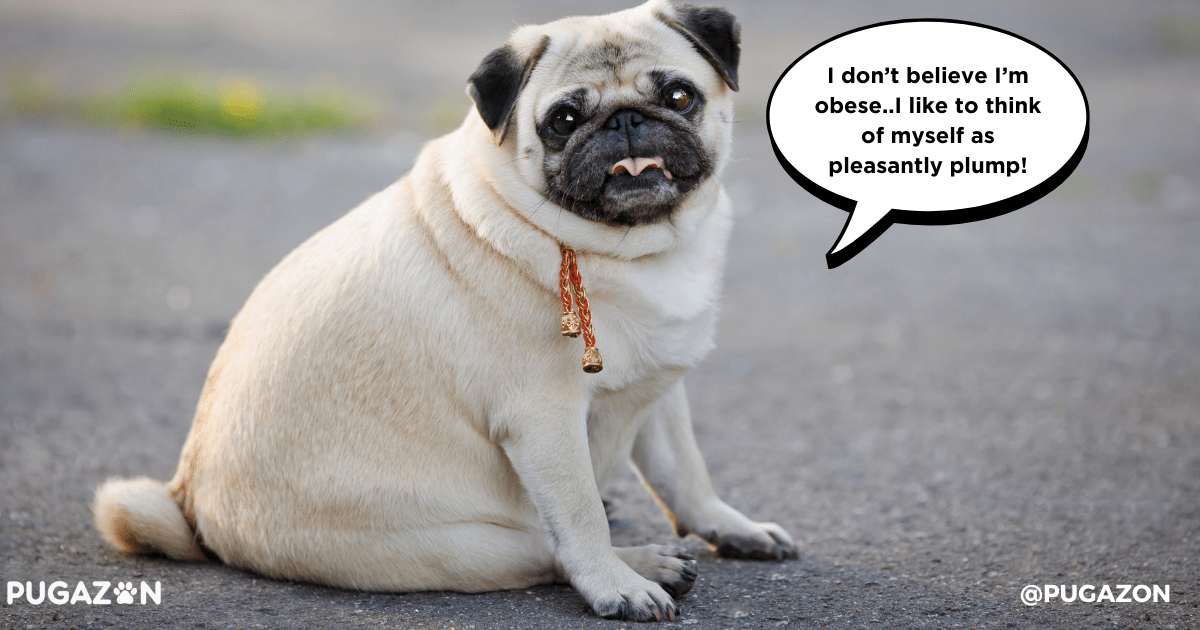
Pugs are prone to obesity due to their love for food and their lower activity levels. Unfortunately, obesity can worsen respiratory and joint problems, which are already common in the breed. Keeping your pug at a healthy weight and supporting their joint health is essential to preventing serious health complications.
Recognizing Obesity in Pugs
It can be difficult to determine if your pug is overweight, especially since they have naturally stocky bodies. However, there are key signs to watch for:
- Difficulty Breathing: Overweight pugs often struggle to breathe, even after light activity.
- Inability to Feel the Ribs: If you can’t easily feel your pug’s ribs through their skin, they may be overweight.
- Reluctance to Exercise: Obese pugs tend to avoid activity because it becomes too physically demanding.
Weight Management Tips for Pug Health
Managing your pug’s weight requires consistent portion control, regular exercise, and a balanced diet.
Weight Range | Recommended Daily Calories | Exercise Needs |
14-18 lbs | 500-600 calories | 2-3 short walks a day |
18-22 lbs | 600-700 calories | Regular playtime and walks |
Tips for Weight Control:
- Portion Control: Use a measuring cup to control portion sizes and avoid free-feeding. Feed 2-3 smaller meals a day instead of one large meal.
- Low-Calorie Treats: Opt for healthy snacks like carrots or green beans to reduce caloric intake without depriving your pug of treats.
Preventing Joint Issues in Pug Health Care
Obesity places extra strain on a pug’s joints, particularly in their hips and knees. Many pugs are prone to hip dysplasiaand luxating patella, which cause discomfort and difficulty walking.
Preventing Joint Problems:
- Dietary Supplements: Supplements containing glucosamine and chondroitin are commonly recommended to support joint health in pugs. These supplements help reduce inflammation and protect the cartilage in the joints.
- Low-Impact Exercises: Encourage your pug to exercise, but avoid high-impact activities that could strain their joints. Swimming is an excellent form of low-impact exercise that supports joint health without putting pressure on the joints.
Thoughts on Weight and Joint Management:
Maintaining a healthy weight is crucial to preventing obesity-related complications in pugs. Joint problems can often be managed or prevented with the right diet, exercise routine, and supplements. Managing these requirements as part of your pug health care routines will provide long term benefits.
Skin Fold Care in Pug Health Management

The signature wrinkles on a pug’s face are adorable, but they can also be a breeding ground for bacteria if not cleaned properly. Moisture and dirt can get trapped in their skin folds, leading to infections. It’s essential to maintain proper hygiene to keep these folds clean and free from bacteria as part of your daily pug health care checks.
Why Skin Fold Care is Important for Pug Health Care
Pug’s facial folds can trap food, moisture, and dirt, which can lead to bacterial growth, yeast infections, and irritation. Infections in these folds can cause discomfort and, if left untreated, may require veterinary intervention.
Signs of Skin Fold Infections in Pugs
Some key signs that your pug’s skin folds may be infected include:
- Redness or Swelling: Inflammation around the folds indicates irritation.
- Foul Odor: A strong odor may signal a yeast or bacterial infection.
- Discharge or Moisture: Excessive moisture or pus in the folds is a clear sign of infection.
Step-by-Step Cleaning Routine for Pug Skin Folds
Properly cleaning your pug’s skin folds is easy if done consistently. Here’s a simple cleaning routine you can follow:
- Step 1: Gently wipe the folds with a damp cloth or an unscented baby wipe. Make sure to reach deep into the folds.
- Step 2: Dry the folds completely with a soft towel. Moisture trapped in the folds can lead to infections.
- Step 3: For extra protection, apply a vet-approved skin fold cleaner or a mild antibacterial ointment.
- Step 4: Perform this routine daily or as needed, especially after meals or walks.
Recommended Products for Skin Fold Care
- Pet-Safe Antibacterial Wipes: Look for alcohol-free wipes that are gentle on your pug’s skin but effective at cleaning.
- Veterinary-Approved Skin Fold Cleaners: Products designed specifically for cleaning skin folds help prevent bacterial growth while soothing irritation.
Last update on 2025-02-12 / * Affiliate links / Image source: Amazon Product Advertising API
Pug Eye Health: Preventing Common Issues

Pugs’ large, prominent eyes make them prone to a variety of eye problems, including injuries, infections, and chronic conditions. Being proactive about eye care can help prevent serious complications and ensure your pug maintains good eye health throughout their life. Keeping these little goop collectors clean is crucial for long term pug health care.
Common Eye Issues in Pugs
Pugs are susceptible to several specific eye conditions due to the structure of their eyes:
- Corneal Ulcers: These painful sores form when the cornea becomes damaged, often from rubbing or scratching. Signs include squinting, redness, and excessive tearing.
- Dry Eye (Keratoconjunctivitis Sicca): This occurs when your pug’s eyes don’t produce enough tears, causing irritation and inflammation. It often leads to recurrent infections and discharge.
- Cherry Eye: A condition where the third eyelid prolapses, creating a visible red lump in the corner of your pug’s eye.
Preventing Eye Injuries in Pugs
Pugs are particularly prone to eye injuries due to their prominent eyes, which can easily come into contact with objects. To minimize the risk:
- Keep Hair Trimmed: Ensure the hair around your pug’s eyes is kept short to prevent it from irritating or scratching the surface of their eyes.
- Avoid Rough Play: Be cautious during playtime, especially around other dogs or children. Pugs’ eyes are more vulnerable to accidental injury, so monitor their play closely.
- Use Harnesses: When walking your pug, always use a harness instead of a collar. Collars can pull on the neck, causing pressure on the eyes and exacerbating existing conditions like dry eye or glaucoma.
Maintaining Eye Health in Pugs
Regular eye maintenance is important to prevent infections and other complications:
- Daily Cleaning: Wipe around your pug’s eyes with a damp, clean cloth each day. This helps remove dirt, debris, or discharge that could lead to infection.
- Monitor for Changes: Look for signs of redness, squinting, excessive tearing, or cloudiness. If you notice any of these, consult your vet immediately.
Tips for Preventing Eye Problems in Pug Health Care:
- Use a protective cone if your pug has had eye surgery or if they frequently scratch their eyes.
- Keep your home free of hazards such as sharp objects at eye level.
- Regularly check your pug’s eyes for any signs of irritation or infection, and schedule annual vet checkups for professional evaluation.
Expert Advice:
“Pugs’ eyes are more vulnerable than many other breeds due to their structure. Regular checkups and prompt treatment of any issues are essential for maintaining eye health.”
Summary: By following daily eye care routines and taking precautions to prevent injuries, you can help protect your pug’s vision and avoid serious eye problems in the long term.
Always Stay Up to Date
Pug Dental Health Care: Preventing Issues
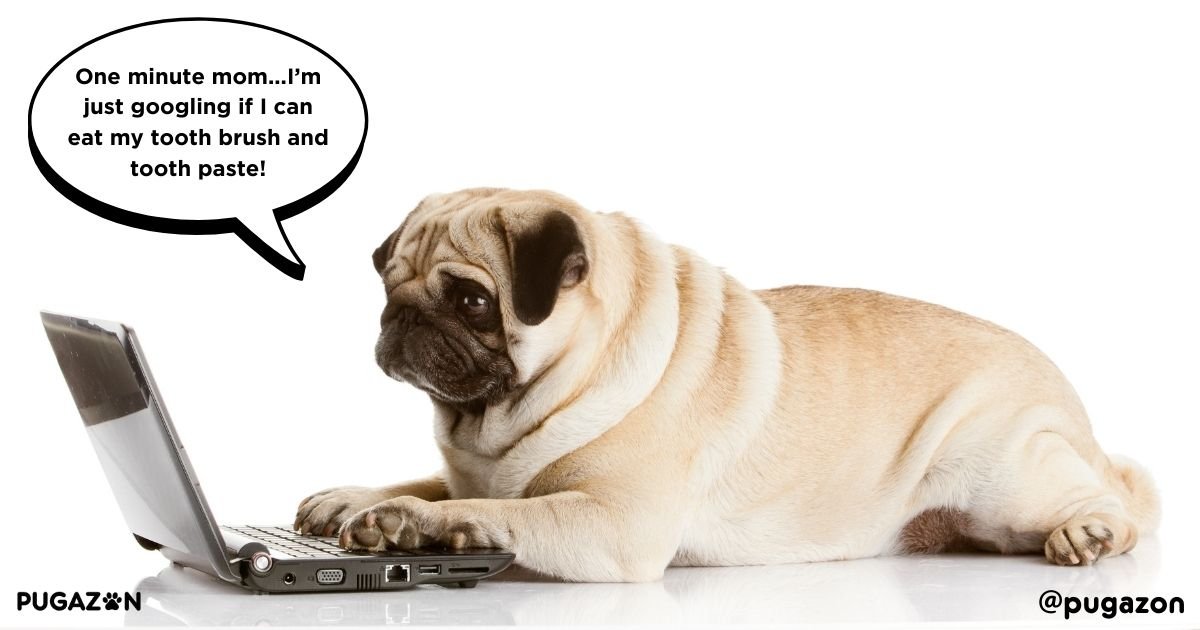
Dental care is often overlooked in pugs, but it’s one of the most critical aspects of maintaining their overall health. Pugs are prone to dental disease due to their small mouths and crowded teeth, which can lead to plaque buildup, gum disease, and tooth decay. Introducing daily teeth brushing is advisable as part of long term pig health care routines.
Why is Dental Care Important for Pugs?
Pugs have small jaws and crowded teeth, which makes it easy for food and bacteria to get trapped, leading to plaque buildup and dental problems. Without regular dental care, this can cause more severe health issues, including infections that spread to the bloodstream and organs.
Common Dental Problems in Pugs
- Gingivitis: Inflammation of the gums caused by plaque buildup. Early signs include red, swollen gums that may bleed during brushing.
- Periodontal Disease: Advanced gum disease that affects the structures supporting the teeth. It can lead to tooth loss if not treated.
- Tooth Decay: Cavities caused by bacteria eroding the enamel of the teeth. Pugs with tooth decay often have bad breath and visible holes in their teeth.
FAQs on Pug Dental Health:
- Q: How often should I brush my pug’s teeth?
- A: Aim to brush your pug’s teeth at least 3-4 times a week. Daily brushing is ideal to prevent plaque buildup.
- Q: Can I use human toothpaste for my pug?
- A: No. Always use dog-safe toothpaste, as human toothpaste contains ingredients like fluoride that are toxic to dogs.
Effective Tips for Pug Dental Care
- Brushing: Start by introducing your pug to the toothbrush and toothpaste slowly. Begin by brushing a few teeth at a time and gradually increase until they are comfortable with the process.
- Dental Chews: Incorporate dental chews into your pug’s routine. These help scrape away plaque and promote gum health.
- Vet Cleanings: Schedule professional cleanings with your vet at least once a year to remove tartar buildup that can’t be reached by at-home brushing.
Managing Allergies in Pug Health Care
Pugs, like many dog breeds, can suffer from a variety of allergies, which can manifest as skin irritations, digestive issues, or respiratory problems. These allergies can range from food allergies to environmental and seasonal sensitivities. Understanding the root cause of your pug’s allergies and managing their symptoms is crucial for their comfort and health.
Types of Allergies in Pugs
Pugs can develop several types of allergies, each with its own triggers and symptoms. The most common types include:
- Food Allergies: Certain ingredients in dog food, such as beef, chicken, wheat, or dairy, can trigger an allergic reaction. These reactions may cause skin issues, gastrointestinal problems, or ear infections.
- Environmental Allergies: Pugs can also react to environmental allergens like pollen, dust mites, and mold. Seasonal allergies, often caused by pollen, tend to flare up during certain times of the year, leading to itching and respiratory symptoms.
- Contact Allergies: These occur when your pug comes into contact with certain materials like grass, household cleaning products, or flea collars. Symptoms usually include localized skin irritations such as redness or rashes.
Symptoms of Allergies
Allergies in pugs often present themselves as one or more of the following symptoms:
- Itching and Scratching: Persistent itching, licking, and biting at their skin, particularly around the paws, ears, or belly.
- Chronic Ear Infections: Repeated ear infections can be a sign of underlying food or environmental allergies.
- Gastrointestinal Issues: Food allergies often cause vomiting, diarrhea, or excessive gas.
- Respiratory Symptoms: Coughing, sneezing, and watery eyes are signs of environmental allergies, particularly during allergy season.
Recognizing Allergy Symptoms in Pugs
If you suspect your pug is suffering from allergies, the first step is to identify the cause. This can be challenging, as symptoms often overlap with other health issues. Here’s how to narrow down the culprit:
- Elimination Diet: If you think food is the trigger, work with your vet to introduce an elimination diet. This involves feeding your pug a limited-ingredient diet for 8–12 weeks, then gradually reintroducing proteins to identify which one triggers symptoms.
- Allergy Testing: Blood tests and intradermal skin testing performed by a veterinarian can help identify environmental allergens, including pollen and dust mites.
- Observation: Keep track of when and where your pug’s symptoms appear. If the symptoms flare up during certain seasons or after exposure to specific environments, it’s likely related to environmental factors.
Tips for Managing Allergies in Pugs
Managing your pug’s allergies involves a combination of treatments and lifestyle changes to reduce exposure to allergens and alleviate symptoms.
- Food Management: Once you’ve identified the allergenic ingredients, switch to a hypoallergenic or limited-ingredient dog food. Grain-free diets are often recommended for pugs with food sensitivities. Treats should also be monitored to ensure they don’t contain allergens.
- Environmental Control: For environmental allergies, keep your home clean by vacuuming regularly, using air purifiers, and limiting your pug’s exposure to pollen during peak allergy seasons. Wipe down their paws and fur after walks to remove any potential allergens they may have come into contact with.
- Medications: Over-the-counter antihistamines, such as Benadryl, may help reduce allergy symptoms. Your vet may also prescribe corticosteroids, allergy shots, or immunotherapy for severe cases.
- Topical Treatments: Oatmeal baths, medicated shampoos, and soothing sprays can help relieve itchy skin caused by allergies. Regular baths with gentle, hypoallergenic dog shampoo can also help manage skin conditions caused by environmental allergens.
Summary: Identifying and managing your pug’s allergies requires patience and diligence, but it can dramatically improve their quality of life. By determining the cause of the allergy and making appropriate dietary, environmental, or medical adjustments, you can help your pug live comfortably. Introduce daily routines into your pug health care schedule and your pug will thank you forever.
FAQs About Pug Health Care
Preventing respiratory issues in pugs involves managing their weight, avoiding overheating, and reducing strenuous exercise. Pugs are prone to Brachycephalic Obstructive Airway Syndrome (BOAS) due to their flat faces. Keep your pug at a healthy weight to reduce pressure on their airway and avoid taking them on walks during hot or humid weather. Use a harness instead of a collar to avoid putting extra strain on their neck, which can exacerbate breathing problems. Consult your vet if you notice signs of difficulty breathing.
Skin fold infections are common in pugs due to their wrinkled skin, which traps moisture and dirt. The main signs of an infection include:
- Redness or swelling: The folds may become irritated, inflamed, and swollen.
- Foul odor: A strong, unpleasant smell is often an indicator of bacterial or yeast infections.
- Excessive moisture or discharge: If the skin appears moist, or if there is a discharge, this can signal an infection.
To prevent skin fold infections, clean your pug’s wrinkles daily with a damp cloth and dry thoroughly to avoid moisture buildup.
Pugs are prone to dental disease due to their small, crowded mouths. Ideally, you should brush your pug’s teeth 3-4 times a week with a dog-safe toothpaste. Additionally, provide dental chews or toys to help clean their teeth between brushing. Regular dental checkups with your vet are also important to prevent plaque buildup and gum disease.
Maintaining a healthy weight is essential for preventing obesity-related health issues like joint problems and respiratory distress. To manage your pug’s weight:
- Feed them a balanced, portion-controlled diet.
- Provide regular low-impact exercise, such as short walks or swimming.
- Use low-calorie treats like carrots or cucumbers, and avoid overfeeding.
Monitoring your pug’s weight and adjusting their diet accordingly can help prevent obesity.
Pugs’ large, prominent eyes make them prone to injury and conditions like dry eye and corneal ulcers. To care for their eyes:
- Wipe around their eyes daily to remove dirt or discharge.
- Avoid letting your pug rub their face on rough surfaces, which can cause injuries.Monitor for signs of irritation, such as redness, squinting, or excessive tearing, and consult your vet if any symptoms appear.
Pugs need regular exercise to stay healthy, but due to their brachycephalic nature, they can overheat easily. The ideal exercise routine for a pug includes:
- Short, frequent walks: 15-20 minute walks 2-3 times a day are ideal.
- Indoor play: On hot days, play with interactive toys indoors to keep your pug active without risking overheating. Avoid vigorous exercise, especially in hot or humid conditions, as this can lead to breathing difficulties
Yes, pugs are prone to allergies, including food allergies, environmental allergies, and contact allergies. Common allergens include:
- Food: Ingredients like beef, chicken, or wheat.
- Environmental: Pollen, dust mites, and mold.
- Contact: Grass, cleaning products, or certain fabrics. Symptoms include itching, sneezing, and gastrointestinal issues. Consult your vet to identify the specific allergens affecting your pug and develop a management plan.
Pugs are susceptible to joint issues like hip dysplasia and luxating patella, particularly if they are overweight. To prevent joint problems:
- Maintain your pug’s weight with a balanced diet and regular exercise.
- Consider joint supplements containing glucosamine and chondroitin to support joint health.
- Avoid high-impact activities that could strain their joints.
Regular vet checkups can help catch joint issues early and provide treatment options to manage the condition.
Pugs are highly sensitive to heat due to their flat faces. To prevent overheating:
- Limit outdoor time during the hottest parts of the day and ensure they have access to shade and cool areas.
- Use a cooling mat or vest to help regulate their temperature.
- Provide plenty of fresh water to keep them hydrated. Signs of overheating include excessive panting, drooling, and lethargy. If you notice these symptoms, move your pug to a cool area immediately and contact your vet
Regular grooming helps maintain your pug’s coat health and reduces shedding. To keep your pug’s coat shiny and healthy:
- Brush their coat 2-3 times a week to remove loose fur and stimulate the skin.
- Bathe your pug every 4-6 weeks with a mild, dog-safe shampoo.
- Feed a diet rich in Omega-3 fatty acids, which support skin and coat health.
Proper grooming and a healthy diet will ensure your pug’s coat stays soft, shiny, and free of irritations.


